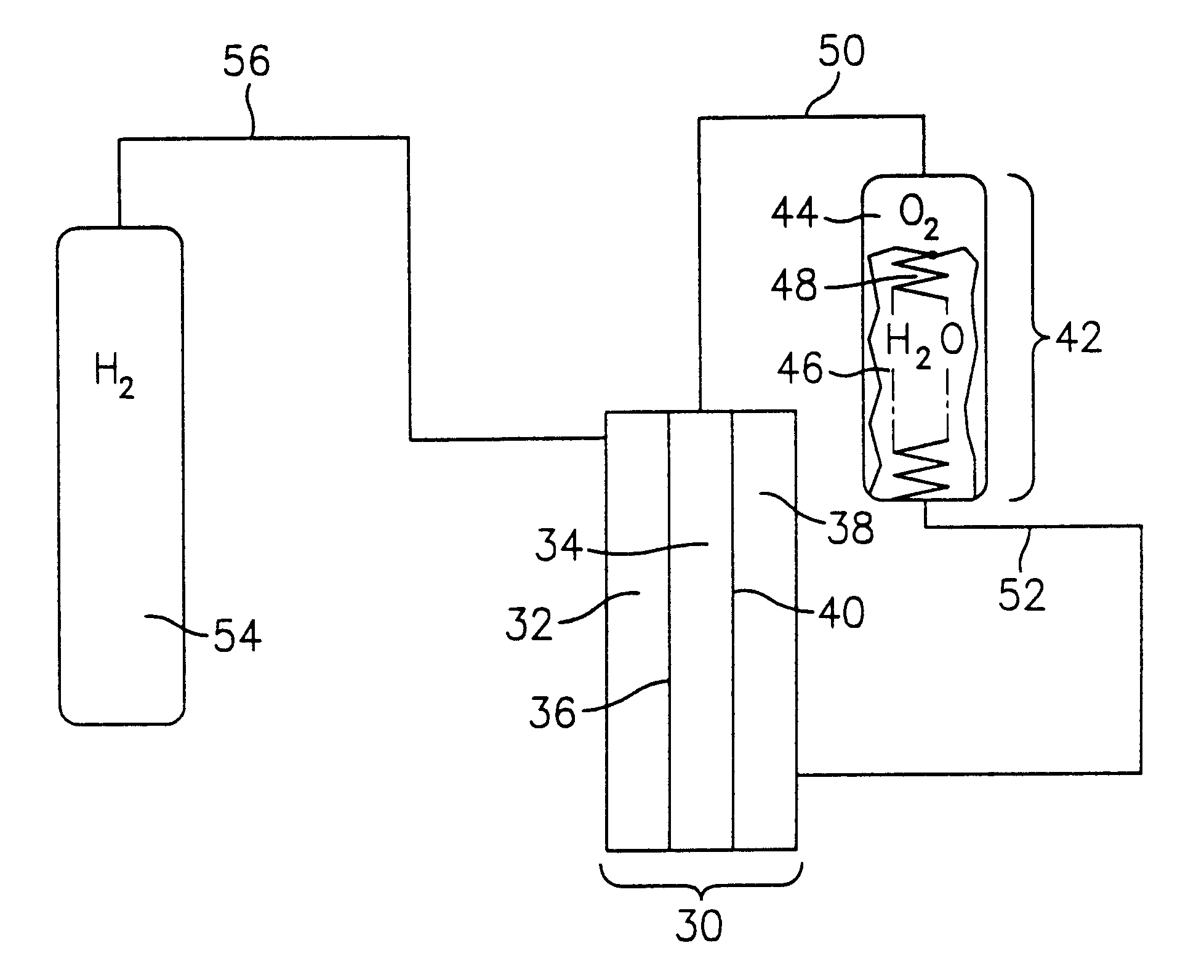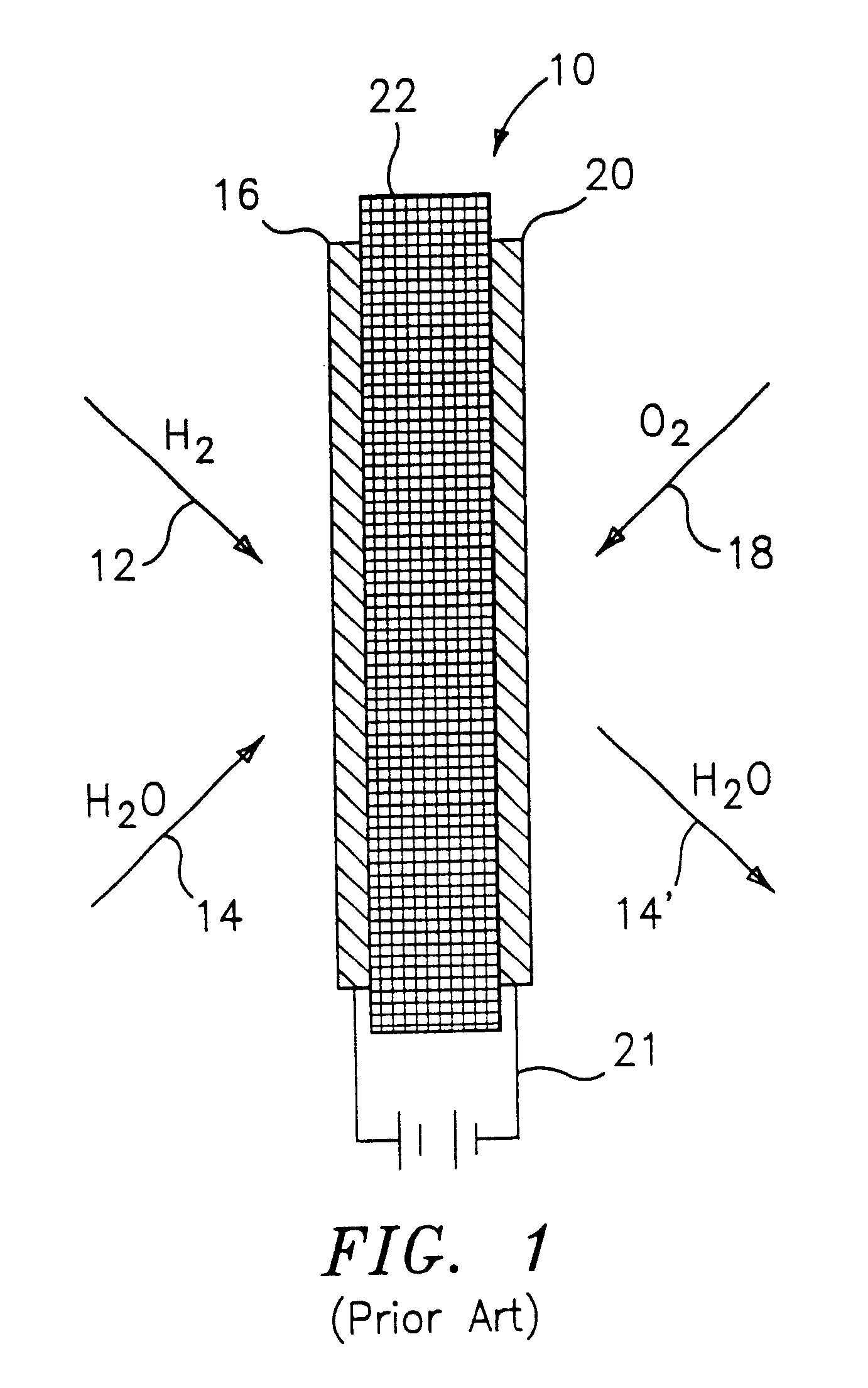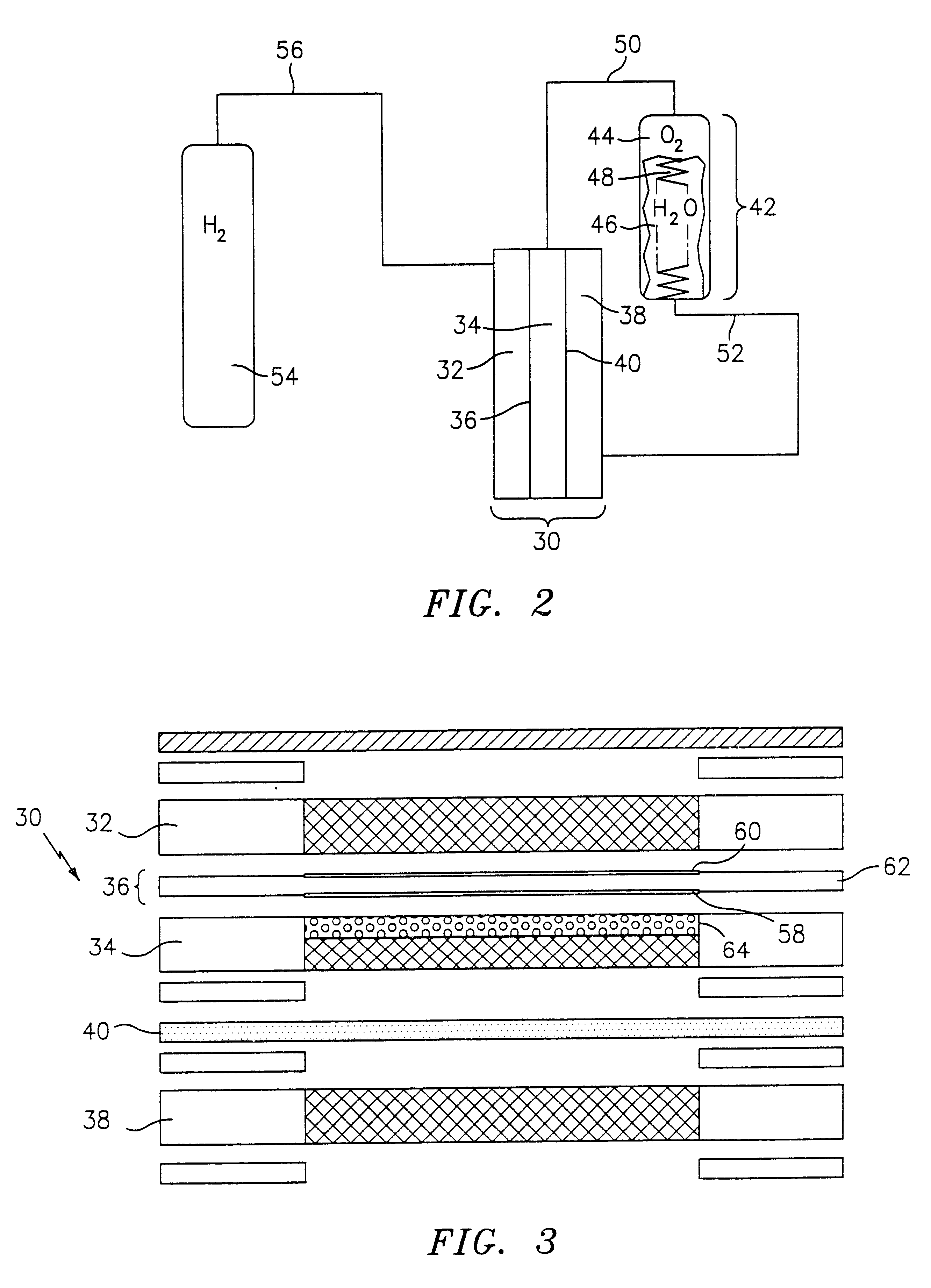Low gravity electrochemical cell
a low-gravity electrochemical and cell technology, applied in the direction of cell components, electrochemical generators, instruments, etc., can solve the problems of consuming electricity, over-equipment costs, and increasing system complexity
- Summary
- Abstract
- Description
- Claims
- Application Information
AI Technical Summary
Benefits of technology
Problems solved by technology
Method used
Image
Examples
Embodiment Construction
An electrochemical cell having the configuration of cell 30 in FIG. 3 was constructed and tested. The cell had an active area of 0.05 squared feet (46.4 squared centimeters), and was fluidly coupled with a 316 stainless steel water tank having a volumetric capacity of 50 cubed centimeters (cc), a 316 stainless steel hydrogen tank having a volumetric capacity of 500 cc, and a 316 stainless steel oxygen tank having a volumetric capacity of 500 cc. A single cell was constructed using NAFION.RTM. membrane, titanium alloy screen packs for the hydrogen flow field, oxygen flow field, and water flow field, and a titanium alloy porous plate for the media divider. The system was operated under zero gravity conditions at 119.degree. F. (48.3.degree. C.), with fluid flows equivalent to pressures of 40 psi and 50 psi for the hydrogen and oxygen, respectively. The following tables summarize polarization data for the above-described cell, wherein Table 1 represents electrolysis data and Table 2 re...
PUM
| Property | Measurement | Unit |
|---|---|---|
| thick | aaaaa | aaaaa |
| thick | aaaaa | aaaaa |
| thick | aaaaa | aaaaa |
Abstract
Description
Claims
Application Information
 Login to View More
Login to View More - R&D
- Intellectual Property
- Life Sciences
- Materials
- Tech Scout
- Unparalleled Data Quality
- Higher Quality Content
- 60% Fewer Hallucinations
Browse by: Latest US Patents, China's latest patents, Technical Efficacy Thesaurus, Application Domain, Technology Topic, Popular Technical Reports.
© 2025 PatSnap. All rights reserved.Legal|Privacy policy|Modern Slavery Act Transparency Statement|Sitemap|About US| Contact US: help@patsnap.com



